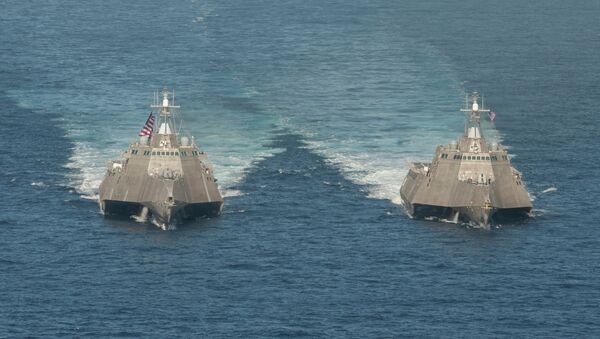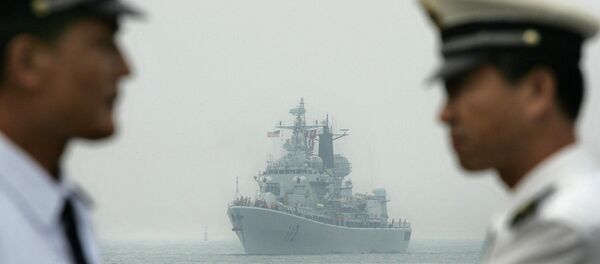The Littoral Combat Ship (LCS), designed for close-shore combat, was unable to effectively defend itself against smaller attack boats, according to a recent report by the DOT&E.
The tests pitted the LCS USS Coronado against attack boats, which infiltrated the ship's "keep-out" zone, the report stated. The Coronado ultimately destroyed the attackers, but the simulation showed that the ship would have suffered heavy damage.
A US Navy official, speaking to Breaking Defense on condition of anonymity, called the DOT&E findings "unfair," pointing out that the LCS was not equipped with its missile package.
In a letter, the DOT&E responded that the unnamed Navy official "was apparently not familiar with the basis for the test and many of his statements are incorrect or not related to what was being tested."
The Navy "established a much lower performance threshold" for the missile-less LCS in a classified 2013 memo from the then-Vice-Chief of Naval Operations, DOT&E said.
"It also defined what the Navy considered to be a successful engagement, specifically requiring each target to be neutralized before any of them closed to within the Navy prescribed minimum stand-off range – a range selected based on the distance at which threat weapons would have a good chance of hitting the LCS. In reality, there are several threat weapons that could hit LCS from an even greater distance …."
Even judging by these lower standards, however, LCS allowed the enemy boats too close, DOT&E said.
"Though the ship was able to eventually repel the simulated attack, this was after the targets had successfully penetrated the Navy's prescribed stand-off range," the letter stated.
"In a real battle, there would be a good chance LCS might have sustained damage at that point that could have affected its subsequent capability to successfully repel the attack."
The LCS will be tested again when the Longbow Hellfire surface-to-surface missiles are added in 2017, although it will be tested "more robustly," the DOT&E wrote.




